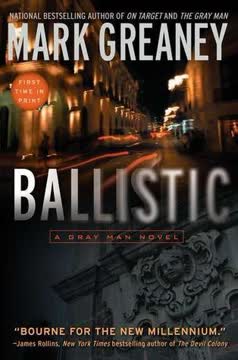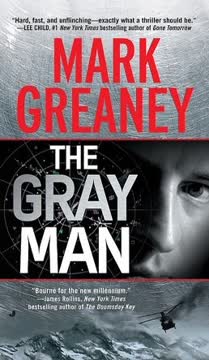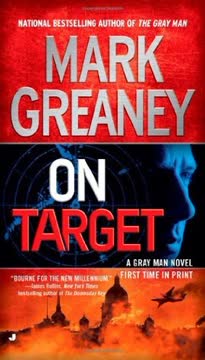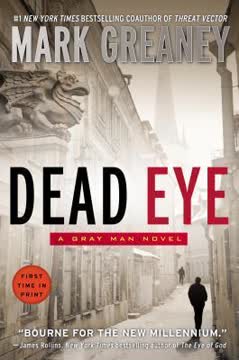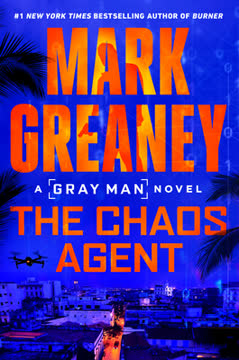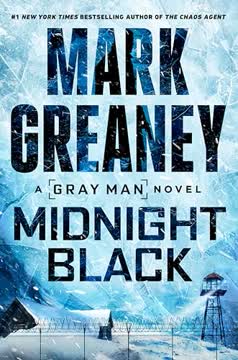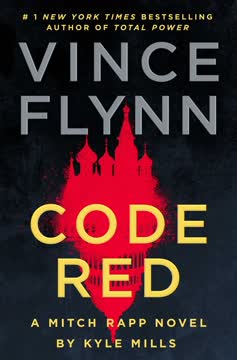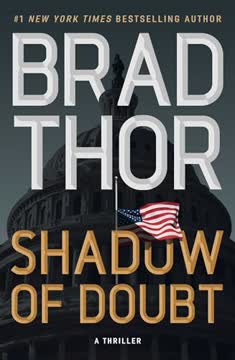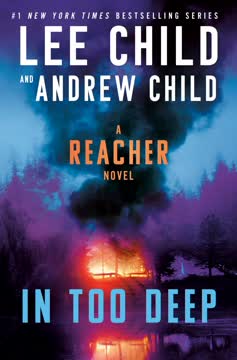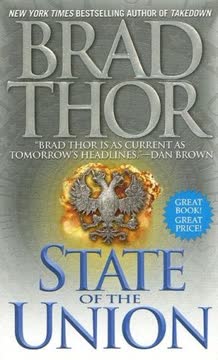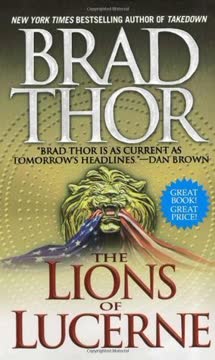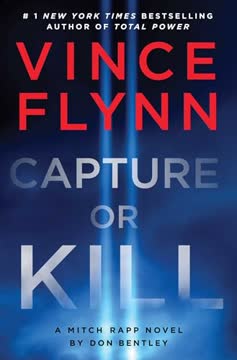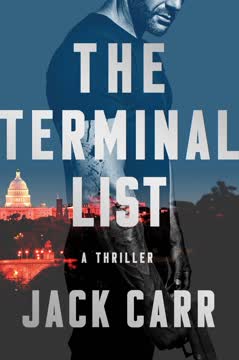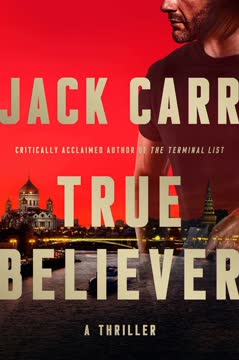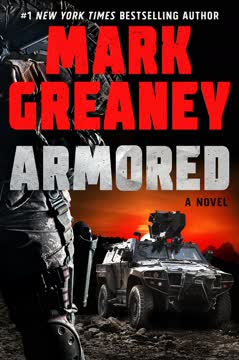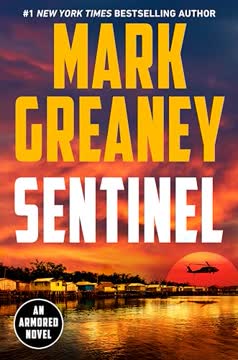Plot Summary
1. Jungle Manhunt and Escape
Court Gentry, known as the Gray Man, is hunted by a Dutch manhunter and his team through the jungles of South America. After months on the run, Court is discovered working as a salvage diver in a remote Amazonian village. When the manhunter's mercenaries descend by helicopter, Court's carefully constructed life is shattered. He flees through the jungle, using his wits and the environment—unleashing killer bees and swinging over crocodile-infested rivers—to escape. The chase is brutal, and Court's survival is a testament to his resourcefulness and lethal skill. The manhunter's pursuit ends in a deadly confrontation, with Court turning the tables and eliminating his pursuer, but not before learning that a Russian mobster, Sidorenko, is behind the hunt.
2. Amazon Village Under Fire
Court's brief respite in the Amazon is upended when the manhunter's arrival signals the end of his peace. The villagers, including a young boy named Mauro, are caught in the crossfire as helicopters and gunmen descend. Court's escape is harrowing, involving a desperate run through the jungle, a battle with mercenaries, and a dangerous swim through crocodile-infested waters. The violence leaves the village scarred and Court once again on the run, forced to abandon any hope of a normal life.
3. Crocodiles and Close Calls
Court's escape route is blocked by crocodiles, forcing him into a perilous swim. He narrowly survives multiple attacks, using his shotgun to fend off the predators. The ordeal leaves him wounded and exhausted, but he manages to steal a canoe and flee upriver. The relentless pursuit and the dangers of the jungle underscore the constant threat Court faces, both from man and nature.
4. The Manhunter's End
After months of pursuit, the Dutch manhunter finally corners Court in a hotel room. In a swift and brutal confrontation, Court kills the manhunter, extracting the name of his employer—Sidorenko—before the man dies. This act severs one line of pursuit but sets Court on a new path, seeking answers and revenge against those who want him dead.
5. Ghosts of Laos
Court's journey is haunted by memories of a mission in Laos, where he was captured while trying to rescue DEA agent Eddie Gamble. The two men endured torture and deprivation, forging a bond through shared suffering. Eddie's selflessness and courage left a lasting impression on Court, shaping his sense of loyalty and duty. Their escape, orchestrated through cunning and violence, is a testament to their resilience and the darkness they've both endured.
6. Eddie Gamble's Legacy
News of Eddie Gamble's death in Mexico draws Court to San Blas, where he meets Eddie's pregnant widow, Elena, and his sister, Laura. The family is reeling from Eddie's assassination during a failed police operation against cartel boss Daniel de la Rocha. Court is drawn into their world, feeling a responsibility to protect them as they become targets in the escalating cartel war.
7. Family, Grief, and Guilt
Court becomes entangled with the Gamboa family, witnessing their grief and the community's suspicion. Eddie's legacy is complicated by rumors and the pervasive influence of the cartels. Court's presence brings both hope and danger, as the family is forced to flee their home, pursued by corrupt police, soldiers, and cartel assassins. The bonds of family and the weight of loss drive their desperate search for safety.
8. Cartel Power and Corruption
The narrative shifts to the power structures of Mexico's drug cartels. Daniel de la Rocha, leader of Los Trajes Negros (the Black Suits), is both a ruthless criminal and a public benefactor, protected by corrupt officials and revered by many. The cartels' reach extends into every facet of society, making trust and safety elusive. The Gamboas' plight is emblematic of the broader struggle against systemic corruption and violence.
9. The Memorial Massacre
At a memorial rally for fallen police, Court and the Gamboas are caught in a carefully orchestrated massacre. De la Rocha's men, disguised as federal police, open fire on the crowd, targeting the families of their enemies. Court's quick thinking and lethal skills save some of the Gamboas, but many are killed. The event marks a turning point, igniting a personal vendetta and a wider cartel war.
10. The Gamboa Family in Peril
Fleeing the massacre, Court leads the surviving Gamboas to a remote hacienda. There, they are besieged by cartel gunmen and corrupt police. Allies are few and unreliable; even supposed friends may be informants. The siege is brutal, with waves of attackers and mounting casualties. Court's tactical genius and the family's resilience are tested to the limit as they fight for survival.
11. Sanctuary and Betrayal
Seeking help from rival cartel leader Constantino Madrigal, Court strikes a deal to wage a one-man war against de la Rocha in exchange for support. But alliances are fragile, and betrayal is inevitable. As Court's campaign of sabotage devastates de la Rocha's operations, the violence spirals, drawing in more enemies and endangering the Gamboas further.
12. The Gray Man's War
Court unleashes a relentless assault on de la Rocha's empire, destroying drug labs, assassinating key lieutenants, and burning millions in cartel cash. His actions provoke a full-scale war between the cartels, with innocent lives caught in the crossfire. Court's single-minded pursuit of Laura's freedom comes at a staggering cost, both to himself and to the country around him.
13. Cartel War Ignites
De la Rocha, enraged by Court's attacks and convinced of Madrigal's involvement, declares war on the rival cartel. The conflict escalates rapidly, with dozens killed in reprisals and ambushes. Court's value as a pawn increases, and both cartels seek to capture or kill him. The chaos and bloodshed underscore the futility and horror of the drug war.
14. The Outlaw's Bargain
Court is betrayed by Madrigal, who agrees to trade him to de la Rocha in exchange for peace and a valuable drug lab. Facing execution, Court bargains for his life by offering to deliver Nestor Calvo, de la Rocha's consigliere, to Madrigal. The plan is a high-stakes gamble, relying on deception, violence, and Court's unmatched skills to succeed.
15. Showdown at the Villa
Court infiltrates de la Rocha's heavily guarded villa, using subterfuge and explosives to force a meeting. In a tense standoff, he demands Laura's release in exchange for ending his campaign of destruction. De la Rocha, consumed by pride and rage, refuses, setting the stage for a deadly showdown.
16. The Last Stand
As the villa comes under attack from rival cartel gunmen, Court and Laura fight their way through waves of enemies. In a climactic rooftop battle, Laura kills de la Rocha, and Court pilots a helicopter to a crash landing, ensuring their escape. The victory is hard-won and costly, leaving both physically and emotionally scarred.
17. Aftermath and Farewell
With de la Rocha dead and the Gamboas safe in the United States, Court releases Calvo, securing a fragile peace. Laura, traumatized by her ordeal, chooses to become a nun, leaving Court to grapple with loss and the emptiness of his existence. The story ends with Court, still hunted and alone, paying his respects at Eddie's grave, haunted by the violence and unable to find solace or belonging.
Characters
Court Gentry (The Gray Man)
Court is a former CIA operative turned international fugitive, known for his unmatched skills in survival, combat, and assassination. Driven by a personal code of honor, he is both protector and destroyer, capable of extreme violence but motivated by loyalty and a desire to do right by those he cares for. Court's psychological landscape is shaped by trauma, guilt, and a profound sense of isolation. His relationships—with Eddie Gamble, the Gamboa family, and Laura—reveal a longing for connection, but his life as a hunted man makes true belonging impossible. Over the course of the novel, Court is forced to confront the limits of his morality and the cost of his actions, ultimately sacrificing personal happiness for the safety of others.
Laura Gamboa Corrales
Laura is Eddie Gamble's sister, a policewoman with a strong sense of justice and family loyalty. She is courageous and resourceful, fighting alongside Court to protect her family. Laura's faith and compassion contrast with the brutality around her, and her relationship with Court offers both solace and heartbreak. Traumatized by violence and loss, she ultimately chooses a life of spiritual devotion, seeking meaning and peace as a nun. Her journey reflects the struggle to maintain humanity in a world consumed by violence.
Elena Gamboa Gonzalez
Eddie's pregnant widow, Elena is thrust into a nightmare of loss and danger. Her primary concern is the survival of her unborn child and the remnants of her family. Elena's strength is tested repeatedly as she endures betrayal, flight, and the constant threat of death. Her faith and resilience are sources of hope, but she is also marked by grief and the trauma of her husband's murder.
Eddie Gamble (Eduardo Gamboa)
A former DEA agent and Court's friend from a shared ordeal in Laos, Eddie is a symbol of integrity and sacrifice. His decision to return to Mexico to fight the cartels costs him his life, leaving his family vulnerable. Eddie's legacy drives much of the novel's action, as Court seeks to honor his memory by protecting those he left behind. Eddie's story is a meditation on the cost of heroism and the enduring power of friendship.
Daniel de la Rocha (DLR)
The leader of Los Trajes Negros, de la Rocha is both a feared cartel boss and a public figure, blending philanthropy with brutality. He is driven by pride, superstition (devotion to Santa Muerte), and a need for control. DLR's psychological unraveling is accelerated by Court's campaign against him, leading to paranoia, rage, and ultimately his violent demise. He embodies the seductive and destructive power of unchecked authority.
Nestor Calvo Macias
Calvo is de la Rocha's consigliere, the true strategist behind the cartel's operations. He is intelligent, cautious, and increasingly disillusioned by the chaos and bloodshed. Calvo's survival instincts lead him to betray and negotiate as needed, and his ultimate release by Court signals a shift in the balance of power. He represents the cold logic of criminal enterprise, but also the limits of loyalty in a world ruled by fear.
Javier "Spider" Cepeda
Spider is the head of de la Rocha's enforcement arm, a killer who relishes violence and power. He is fiercely loyal to DLR but also driven by personal ambition. Spider's brutality is matched by his tactical skill, making him a formidable adversary. His death at Laura's hands is both a moment of justice and a symbol of the cycle of violence.
Constantino Madrigal (El Vaquero)
Madrigal is the leader of a rival cartel, embodying the outlaw tradition of the Mexican mountains. He is pragmatic, ruthless, and values strength and cunning. Madrigal's alliance with Court is transactional, and his willingness to betray reflects the shifting loyalties of cartel politics. He is both a mirror and a foil to de la Rocha, representing a different but equally deadly form of power.
Ramses Cienfuegos Cortillo
A surviving member of Eddie's special operations team, Ramses is a capable and honorable fighter. He aids Court and the Gamboas, risking his life for their safety. Ramses's journey is marked by loss, sacrifice, and the recognition that even the best intentions are often crushed by the machinery of corruption and violence.
Jerry Pfleger
An American embassy official, Jerry is motivated by greed and self-preservation. His willingness to betray anyone for profit makes him a symbol of the moral decay that pervades both sides of the border. Jerry's fate—tortured and killed by the cartels—serves as a cautionary tale about the dangers of complicity and the illusion of control.
Plot Devices
Nonlinear Narrative and Flashbacks
The novel employs flashbacks, particularly to Court's time in Laos with Eddie Gamble, to provide context for his motivations and relationships. These memories shape Court's actions in the present, illustrating how past trauma and loyalty drive his relentless pursuit of justice and protection for the Gamboas.
Relentless Pursuit and Survival
From the opening pages, Court is hunted by multiple enemies—mercenaries, cartels, corrupt officials, and even his own government. The unending pursuit creates a sense of urgency and paranoia, forcing Court to rely on his skills, instincts, and occasional alliances. Survival is both a physical and psychological battle, revealing the costs of living as a fugitive.
Moral Ambiguity and Betrayal
The novel is populated by characters whose loyalties and motivations are constantly shifting. Allies become enemies, and vice versa. Court's own actions—murder, sabotage, deception—are justified by necessity but raise questions about the price of survival and the nature of justice. The pervasive corruption in both law enforcement and criminal organizations underscores the difficulty of discerning right from wrong.
Cartel Politics and Power Struggles
The war between de la Rocha and Madrigal provides the backdrop for Court's personal mission. The machinations of cartel leaders, their advisors, and their armies of sicarios create a volatile environment where trust is scarce and violence is inevitable. The interplay of power, pride, and pragmatism shapes the fates of all involved.
Symbolism of Family and Faith
The Gamboa family's struggle for survival is a microcosm of the broader human cost of the drug war. Their faith, particularly Laura's, serves as both a source of strength and a reminder of innocence lost. The recurring presence of churches, prayers, and the cult of Santa Muerte highlights the search for meaning and redemption amid chaos.
High-Stakes Action and Tactical Detail
The novel's action sequences are meticulously detailed, emphasizing Court's expertise and the dangers he faces. From jungle escapes to urban firefights and sieges, the violence is both thrilling and harrowing, reinforcing the stakes and the toll on all involved.
Analysis
Ballistic is more than a high-octane thriller; it is a study of the human spirit under siege. Mark Greaney uses the relentless action and shifting alliances of the Mexican drug war to explore themes of loyalty, sacrifice, and the search for meaning in a world defined by violence and betrayal. Court Gentry is both hero and antihero, a man shaped by trauma and driven by a code that is constantly tested. The novel's depiction of systemic corruption, the blurred lines between good and evil, and the devastating impact of the drug trade on families and communities is both timely and timeless. Ultimately, Ballistic asks whether redemption is possible for those who live by the sword, and whether love and faith can survive in a world where trust is a luxury few can afford. The answer is ambiguous, as the story ends with Court alone, still hunted, still searching for a place to belong—a gray man in a world without easy answers.
Last updated:
FAQ
Synopsis & Basic Details
What is Ballistic about?
- A Fugitive's Relentless Hunt: Ballistic plunges readers into the life of Court Gentry, the Gray Man, a former CIA operative now a global fugitive. The story opens with Court on the run in the Amazon, his brief respite shattered by a relentless pursuit orchestrated by a Russian mobster, Sidorenko, forcing him back into a life of constant evasion and lethal action.
- A Debt of Loyalty Repaid: The narrative pivots when Court learns of the death of Eddie Gamble, a DEA agent who once saved his life in a Laotian prison. Driven by a deep sense of loyalty, Court travels to Mexico, where he becomes entangled with Eddie's grieving family, who are caught in the brutal crossfire of Mexico's escalating drug cartel wars.
- One Man Against a Cartel: Court finds himself protecting Eddie's pregnant widow, Elena, and his sister, Laura, from Daniel de la Rocha, the charismatic and ruthless leader of Los Trajes Negros (the Black Suits) cartel. This leads to a one-man war against de la Rocha's vast criminal empire, as Court unleashes a campaign of sabotage and violence to secure the family's freedom and exact a measure of justice.
Why should I read Ballistic?
- Unparalleled Tactical Realism: Mark Greaney is renowned for his meticulous research and authentic portrayal of combat, espionage, and weaponry. Readers seeking a high-octane thriller with believable action sequences, from jungle escapes to urban firefights and complex tactical maneuvers, will find Ballistic deeply satisfying.
- Deep Dive into Moral Ambiguity: The novel explores the murky ethical landscape of the drug war, where lines between good and evil are constantly blurred. Characters like Court Gentry operate in a "gray" area, forcing readers to confront difficult questions about justice, loyalty, and the true cost of survival in a corrupt world.
- Compelling Character-Driven Narrative: Beyond the explosive action, Ballistic offers a poignant exploration of Court Gentry's internal struggles with isolation, trauma, and his longing for human connection. His evolving relationships, particularly with Laura Gamboa, add significant emotional depth to the relentless pursuit and violence, making the story resonate long after the final page.
What is the background of Ballistic?
- The Gray Man Series Continuation: Ballistic is the third novel in Mark Greaney's acclaimed Gray Man series, following The Gray Man and On Target. It continues Court Gentry's journey as a hunted former CIA asset, building upon his established skills and the consequences of his past actions, particularly his "shoot-on-sight" sanction from the CIA.
- Mexican Drug War Context: The novel is deeply embedded in the socio-political reality of the Mexican drug war, portraying its pervasive corruption, the brutal power struggles between cartels like Los Trajes Negros and Los Vaqueros, and the devastating impact on ordinary citizens. Greaney draws on real-world elements like "narcobanderas" (cartel recruitment ads) and the cult of Santa Muerte to lend authenticity to the setting.
- Technological and Tactical Detail: The story showcases a range of contemporary and near-future military and intelligence technologies, from advanced surveillance techniques and armored vehicles (Ford BATTs) to specialized weapons (Glock 18, Hawk MM-1 grenade launcher). This attention to detail grounds the high-stakes action in a believable, if terrifying, technological landscape.
What are the most memorable quotes in Ballistic?
- "Whoever fights monsters should see to it that in the process he does not become a monster.": This epigraph, attributed to Friedrich Wilhelm Nietzsche, sets a profound thematic tone for the entire novel. It directly challenges Court Gentry's methods and internal code, forcing both him and the reader to question whether his extreme violence, even in pursuit of justice, ultimately compromises his humanity.
- "In Mexico, if you have a problem and turn to the police, then you have two problems.": This quote, attributed to Mexican historian Lorenzo Meyer, succinctly captures the pervasive corruption and systemic distrust that defines the novel's setting. It highlights the impossible choices faced by characters like the Gamboa family, underscoring the moral ambiguity and the breakdown of traditional authority.
- "I am going to scorch the earth. I am going to murder, torture, defile. I am going to go ballistic on the motherfuckers who have Laura Gamboa, and I am going to get her back by killing everything in my path. I am not going to play by the rules.": This declaration by Court Gentry to Ramses Cienfuegos encapsulates the raw, unbridled rage and determination that fuels his personal war. It signifies Court's complete embrace of his "Gray Man" persona, shedding any pretense of conventional morality to achieve his singular objective: Laura's rescue.
What writing style, narrative choices, and literary techniques does Mark Greaney use?
- Immersive First-Person Limited Perspective: While primarily third-person, Greaney often uses a deep, almost first-person limited perspective for Court Gentry, allowing readers direct access to his tactical thoughts, internal monologues, and emotional struggles. This technique creates a strong bond between the reader and Court, even as he commits morally ambiguous acts, fostering empathy for his isolated existence.
- Propulsive, High-Octane Pacing: Greaney employs short, action-packed chapters and relentless forward momentum, often ending scenes on cliffhangers or immediate threats. This creates a constant sense of urgency and keeps the reader immersed in the Gray Man's high-stakes world, mirroring the non-stop nature of Court's life on the run.
- Tactical Realism and Technical Detail: The author's signature style is evident in the meticulous descriptions of weaponry, combat techniques, and operational procedures. This verisimilitude, from the specific models of firearms to the intricacies of hot-wiring a car or conducting a surveillance sweep, lends a gritty authenticity to the narrative, appealing to readers who appreciate military and intelligence accuracy.
Hidden Details & Subtle Connections
What are some minor details that add significant meaning?
- Mauro's Outdated Soccer Jersey: The young boy Mauro wears a "red and black Barcelona soccer jersey emblazoned with the name of a Bulgarian player who had not taken the pitch for that club since the mid-nineties." This subtle detail highlights the remote, isolated nature of the Amazon village and Court's own prolonged detachment from modern society, emphasizing his deep immersion in a life off the grid.
- The Manhunter's Webley Revolver: The Dutch manhunter carries an "ancient Webley Top-Break Revolver... really just for show out here amongst the savages of the jungle." This seemingly throwaway detail subtly underscores his outdated methods and overconfidence, contrasting sharply with Court's modern, adaptable lethality and foreshadowing the manhunter's swift demise.
- "Narcobanderas" as Open Recruitment: The "Join the ranks of the Cowboys of the Madrigal Cartel" sign, openly advertising benefits like "life insurance, a house for your family," is a chilling detail. It reveals the deep entrenchment and normalization of cartel power in Mexican society, blurring the lines between legitimate business and organized crime, a fact that profoundly impacts Court's understanding of the conflict.
What are some subtle foreshadowing and callbacks?
- Termite-Weakened Tree Limb: During Court's escape from the Amazon, the vine he swings on is connected to a "high tree limb from which it hung. Termites had nested along the crook where it separated from a larger branch, weakening the joint." This seemingly random detail foreshadows the unexpected failure of his escape plan, forcing him into the crocodile-infested water and highlighting the unpredictable nature of his survival.
- Eddie's "Fast Eddie" Nickname: Eddie Gamble's boast about being "Fast Eddie" who "could boost any ride in under sixty seconds" is a direct callback to his past as a car thief. This skill becomes crucial during their escape from the Laotian prison, demonstrating how seemingly irrelevant past experiences can become vital for survival in Court's world.
- Hanley's Russian Phrase: When Matt Hanley bids farewell to Court in the torture chamber, he uses a Russian phrase: "Tugo zakroi rot I derji ih za sheiu" (Shut your mouth tight and grab them by the neck). This seemingly odd detail foreshadows Hanley's later revelation about the "Kiev" operation and subtly hints at the deeper, more complex web of international intrigue and betrayal that extends beyond the Mexican cartels.
What are some unexpected character connections?
- Jerry Pfleger's "Denmark" Obsession: Jerry Pfleger, the corrupt embassy official, reveals his deep-seated hatred for Mexico and his longing for Denmark, where he went to college. This unexpected personal detail humanizes a morally reprehensible character, showing his motivations stem from a sense of personal injustice and a desire for a life he feels he was denied, rather than pure malice.
- Matt Hanley's Personal Vendetta: The CIA's Matthew Hanley, initially appearing as a cold, bureaucratic figure ordered to identify Court for execution, reveals a personal bitterness stemming from Court's past actions. His unexpected aid to Court in the torture chamber is driven not by loyalty to Court, but by a desire for revenge against Denny Carmichael and a twisted sense of professional integrity, creating a complex and surprising alliance.
- Laura's "Tourist Police" Role: Laura Gamboa's seemingly innocuous role as "tourist police" in Puerto Vallarta is initially dismissed by Elena. However, this minor detail later proves significant, as her knowledge of local roads, roadblocks, and police procedures becomes invaluable during the family's escape, revealing a hidden competence beyond her perceived status.
Who are the most significant supporting characters?
- Luis Corrales, the Dementia-Stricken Patriarch: Laura's father-in-law, Luis, embodies the vulnerability of innocence in the face of cartel brutality. His dementia, causing him to mistake Court for his dead son Guillermo, adds a layer of tragic irony to the hacienda siege. His death, a result of being in the wrong place at the wrong time, underscores the indiscriminate nature of the violence and the profound loss suffered by the Gamboa family.
- Ignacio Gamboa, the Flawed Brother: Eddie's brother Ignacio serves as a stark contrast to Eddie's heroism. His alcoholism and weakness are repeatedly highlighted, culminating in his attempt to abandon the family during the hacienda siege. His death, while attempting to flee, is a tragic commentary on the human cost of fear and the inability of some to rise to the occasion, even for their loved ones.
- The Unnamed Manhunter: Though quickly dispatched, the Dutch manhunter's relentless, seven-month pursuit of Court establishes the Gray Man's formidable reputation and the sheer scale of the forces arrayed against him. His final words, "Sidorenko," directly propel Court into his next mission, making him a pivotal, albeit brief, catalyst for the entire plot.
Psychological, Emotional, & Relational Analysis
What are some unspoken motivations of the characters?
- Court's Addiction to Action: Despite his longing for a normal life, Court experiences an "undeniable sense of relief" when the manhunter arrives in the Amazon. This unspoken motivation reveals his deep-seated addiction to adrenaline and purpose, suggesting that his identity as the Gray Man is not merely a burden but also a source of perverse satisfaction and meaning in his otherwise isolated existence.
- DLR's Obsession with Legacy: Daniel de la Rocha's fanatical devotion to Santa Muerte and his demand for Elena's unborn child are driven by a twisted desire for legacy and symbolic retribution. He sees the child as "Eduardo's only offspring," a direct challenge to his own power and a means to appease his "angry goddess," revealing a deep-seated insecurity and a need to assert absolute dominance even over the symbolic.
- Nestor Calvo's Pragmatic Betrayal: Nestor Calvo's decision to betray DLR by dealing with Madrigal and aiding Court is not driven by morality but by cold, calculated pragmatism. He views DLR's obsession with the Gamboa family and the Gray Man as an "idiotic, unprofessional, and reckless waste of time," revealing his primary motivation is the stability and profitability of the cartel, even if it means undermining his volatile boss.
What psychological complexities do the characters exhibit?
- Court's Internalized Isolation: Court Gentry exhibits profound psychological complexity through his struggle with chronic isolation. He observes "normal everyday life and family and relationships by proxy, often in bus stations," highlighting his detachment. His "perverse comfort" in danger and his inability to form lasting bonds, despite a clear longing for connection (especially with Laura), reveal a man deeply scarred by his past and conditioned for solitude.
- Laura's Faith as a Coping Mechanism: Laura Gamboa's unwavering faith, even amidst unimaginable trauma and loss, serves as a powerful psychological coping mechanism. Her ability to pray for her enemies and her eventual decision to become a nun demonstrate a profound search for meaning and peace beyond the brutal realities of her world, contrasting sharply with Court's more cynical worldview.
- DLR's Narcissistic Delusion: Daniel de la Rocha's character is marked by extreme narcissism and delusion. He believes his Kevlar tie saved him through divine intervention rather than practical protection, and he sees himself as a "Robin Hood" figure despite his brutal actions. This psychological complexity reveals a man who has constructed an elaborate self-justifying narrative to maintain his self-image and control over his followers.
What are the major emotional turning points?
- Court's Return to San Blas: The emotional turning point for Court is his decision to return to San Blas after seeing the "narcobanderas" and realizing the Gamboas' true peril. This moment shifts his motivation from mere self-preservation to a deep-seated loyalty and sense of responsibility for Eddie's family, overriding his ingrained instinct to "disappear" and marking a significant emotional commitment.
- Laura's Killing of DLR: Laura's execution of Daniel de la Rocha in the helicopter is a major emotional turning point for her. It represents a definitive break from her previous life as a "tourist police" officer and a woman of faith, forcing her to confront the brutal realities of violence directly. This act, driven by a desperate need for justice and survival, ultimately propels her towards a life of spiritual retreat.
- Court's Confession of "Love" for Laura: The intimate moments between Court and Laura, particularly his internal struggle with "longing, loneliness, lust" and his eventual, albeit unspoken, realization that he "loved her," represent a profound emotional turning point for Court. This rare vulnerability challenges his identity as the emotionless Gray Man, revealing a capacity for deep human connection he previously suppressed.
How do relationship dynamics evolve?
- Court and Eddie: A Debt of Life: The relationship between Court and Eddie Gamble, forged in the crucible of a Laotian prison, evolves from a shared ordeal into a profound, unspoken bond of loyalty. Eddie's selflessness in caring for Court, and Court's subsequent determination to protect Eddie's family, demonstrates a reciprocal debt of life that transcends their professional roles and drives the entire narrative.
- Court and Laura: From Protector to Intimate Connection: The dynamic between Court and Laura Gamboa evolves significantly, moving from a purely professional protector-protected relationship to one of deep emotional and physical intimacy. Their shared trauma and reliance on each other in extreme circumstances break down Court's emotional barriers, culminating in a brief, intense romantic connection that highlights his longing for belonging, before her ultimate spiritual retreat.
- DLR and Nestor Calvo: The Pragmatist vs. The Zealot: The relationship between Daniel de la Rocha and his consigliere, Nestor Calvo, is a fascinating study in contrasting leadership styles. Calvo, the pragmatic strategist, constantly clashes with DLR's impulsive, superstitious, and pride-driven decisions. Their dynamic evolves into a covert betrayal by Calvo, who prioritizes the cartel's stability over DLR's personal vendettas, ultimately leading to DLR's downfall and Calvo's rise.
Interpretation & Debate
Which parts of the story remain ambiguous or open-ended?
- The Full Extent of CIA Involvement: While Matt Hanley's presence and his orders from Denny Carmichael confirm the CIA's "shoot-on-sight" sanction against Court, the precise reasons for this directive and the "foreign nation's involvement" remain ambiguous. The novel leaves open the question of whether Court was truly a rogue agent or a scapegoat in a larger, unseen geopolitical game, fueling ongoing reader debate about his past.
- The Future of the Gamboa Family: Although Elena, Luz, and Diego successfully cross into the United States, their long-term safety and integration into American society remain open-ended. The novel doesn't detail their future, leaving readers to ponder whether they truly escape the cartel's reach or if the trauma of their experiences will continue to haunt them, even in a new country.
- The Nature of Laura's Calling: Laura's decision to become a nun, while presented as a clear path for her, leaves room for interpretation. Is it a genuine spiritual calling, a profound response to trauma, or a form of self-imposed cloistering to escape the violence and emotional complexities of her past, including her connection with Court? The ambiguity allows for deeper reflection on the diverse ways individuals cope with extreme suffering.
What are some debatable, controversial scenes or moments in Ballistic?
- Court's Torture of Jerry Pfleger: Court's deliberate torture of Jerry Pfleger, shooting him in the foot and hand to ensure his cooperation, is a highly controversial moment. While presented as a necessary evil to save the Gamboas, it forces readers to confront the moral line Court crosses. It sparks debate on whether his actions are justified by the extreme circumstances or if he, as Nietzsche's epigraph warns, becomes a "monster" in fighting them.
- Laura's Execution of Daniel de la Rocha: Laura's cold-blooded killing of Daniel de la Rocha in the helicopter, despite DLR's pleas and Court's warnings, is a shocking and debatable scene. It challenges her characterization as a woman of faith and compassion, raising questions about the corrupting influence of violence and whether her act was a righteous execution or a descent into the very brutality she sought to escape.
- Court Leaving Nestor Calvo Alive: Court's decision to leave Nestor Calvo alive, despite his role in DLR's atrocities, is a pragmatic but debatable choice. While it secures a temporary peace and the safety of the Gamboas, it allows a ruthless cartel leader to rise to power. This moment prompts discussion on whether Court's actions are truly about justice or simply about achieving his immediate objective, even if it means perpetuating the cycle of violence.
Ballistic Ending Explained: How It Ends & What It Means
- The Gray Man's Enduring Isolation: The novel concludes with Court Gentry still a hunted man, unable to find a place of belonging. His final visit to Eddie's defaced grave, observing the sniper teams, underscores that despite his victories, his life remains one of constant vigilance and profound loneliness. The ending reinforces the core theme of the Gray Man's perpetual outsider status, forever "a gray man in a world without easy answers."
- Laura's Spiritual Retreat: Laura Gamboa chooses to enter a convent and become a nun, a decision that signifies her profound response to the trauma and violence she endured. This ending suggests a search for spiritual solace and a definitive break from the brutal world of cartels and assassins. It represents a form of escape and healing, but also a poignant farewell to any possibility of a conventional life or relationship with Court.
- The Cycle of Violence Continues: Despite DLR's death, the drug war in Mexico is far from over. Nestor Calvo, the pragmatic consigliere, rises to power, ensuring the Black Suits' continued operation. Constantino Madrigal remains a formidable force, and the CIA's pursuit of Court continues. The ending implies that individual acts of heroism, while impactful, cannot fundamentally alter the systemic corruption and violence, leaving a bleak outlook on the broader conflict.
Review Summary
Ballistic, the third Gray Man novel, receives mostly positive reviews for its intense action and thrilling plot. Readers praise Greaney's research on Mexican drug cartels and enjoy Court Gentry's character development. Some criticize the violence and implausibility of certain scenarios. The book is noted for its non-stop action, detailed combat scenes, and exploration of Court's past. While some find it less engaging than previous installments, many fans consider it a strong entry in the series, highlighting Court's resourcefulness and determination against overwhelming odds.
Gray Man Series
Similar Books
Download PDF
Download EPUB
.epub digital book format is ideal for reading ebooks on phones, tablets, and e-readers.
